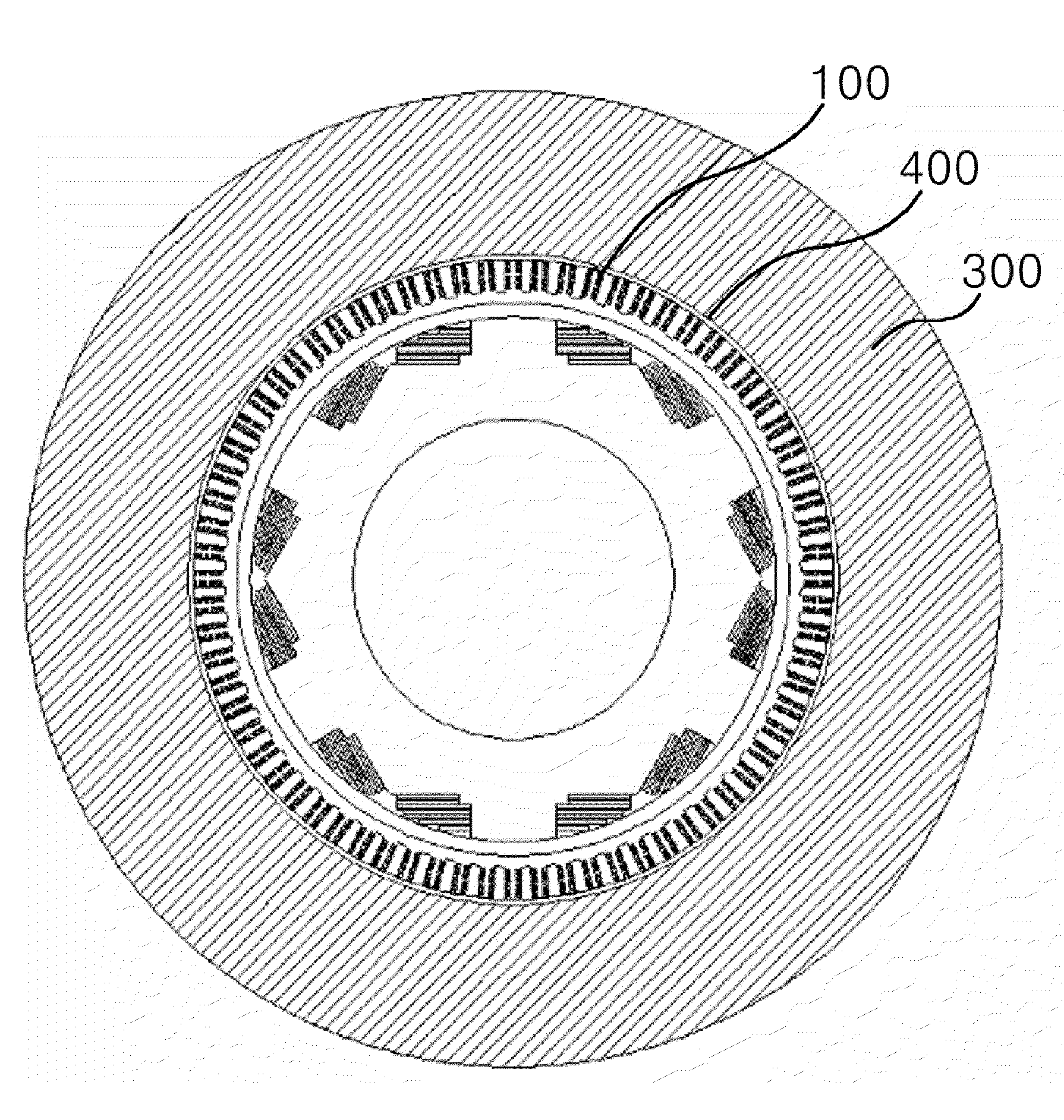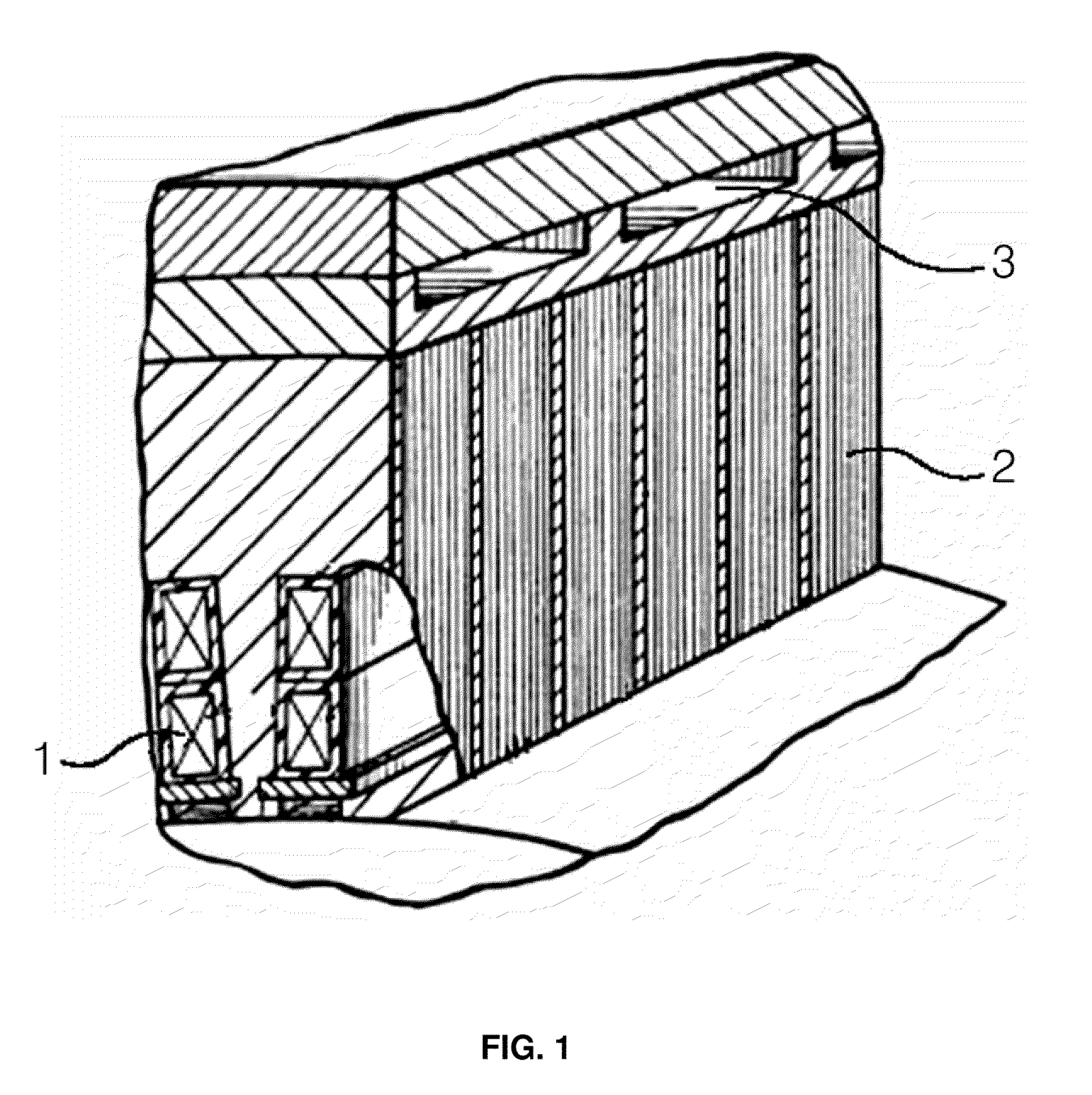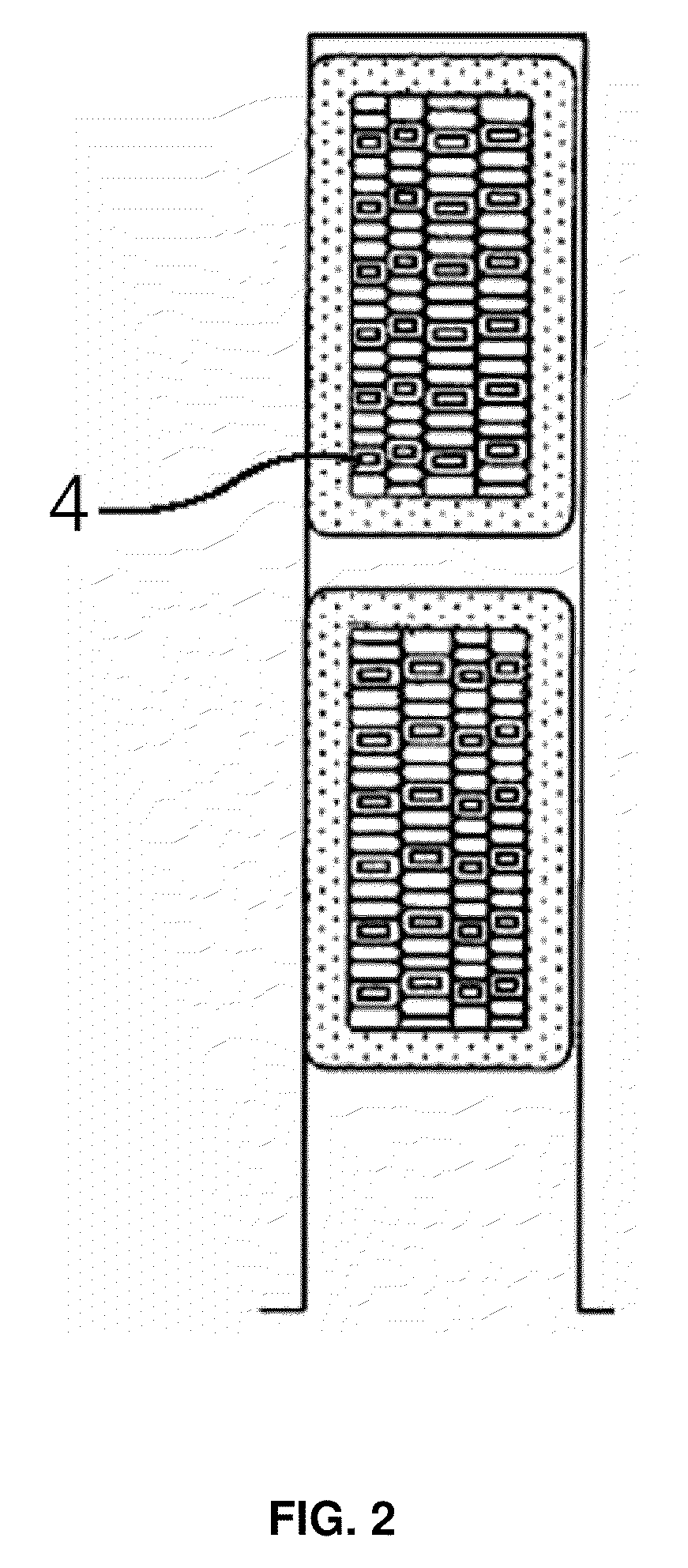Stator cooling structure for superconducting rotating machine
a superconducting rotating machine and cooling structure technology, which is applied in the direction of mechanical energy handling, magnetic circuit rotating parts, shape/form/construction, etc., can solve the problems of increasing the distortion factor of the waveform of generated voltage, difficult to obtain a desired output power, and complicated cooling device using water/oil cooling method, etc., to achieve compact machine, reduce the clogging of cooling tubes, and reduce the effect of clogging
- Summary
- Abstract
- Description
- Claims
- Application Information
AI Technical Summary
Benefits of technology
Problems solved by technology
Method used
Image
Examples
Embodiment Construction
[0030]The present invention is directed to a cooling structure for efficiently eliminating heat generated from the stator coil of a superconducting rotating machine, that is, a superconducting motor or generator. Instead of arranging water / oil cooling tubes in slots, cooling tubes are spirally placed between the outside portion of a stator coil and a stator yoke, so that non-magnetic slots are maintained to withstand electromagnetic force acting on the stator coil. Further, spaces are provided axially between the slots, so that the spiral cooling tubes are disposed in the spaces. Thereby, the stator cooling structure for the superconducting rotating machine is capable of cooling the stator yoke as well as the stator coil.
[0031]Hereinafter, the preferred embodiment of the present invention will be described in detail with reference to the accompanying drawings. FIGS. 6 and 7 are a transverse sectional view and a vertical sectional view, respectively, illustrating the stator cooling s...
PUM
 Login to View More
Login to View More Abstract
Description
Claims
Application Information
 Login to View More
Login to View More - R&D
- Intellectual Property
- Life Sciences
- Materials
- Tech Scout
- Unparalleled Data Quality
- Higher Quality Content
- 60% Fewer Hallucinations
Browse by: Latest US Patents, China's latest patents, Technical Efficacy Thesaurus, Application Domain, Technology Topic, Popular Technical Reports.
© 2025 PatSnap. All rights reserved.Legal|Privacy policy|Modern Slavery Act Transparency Statement|Sitemap|About US| Contact US: help@patsnap.com



